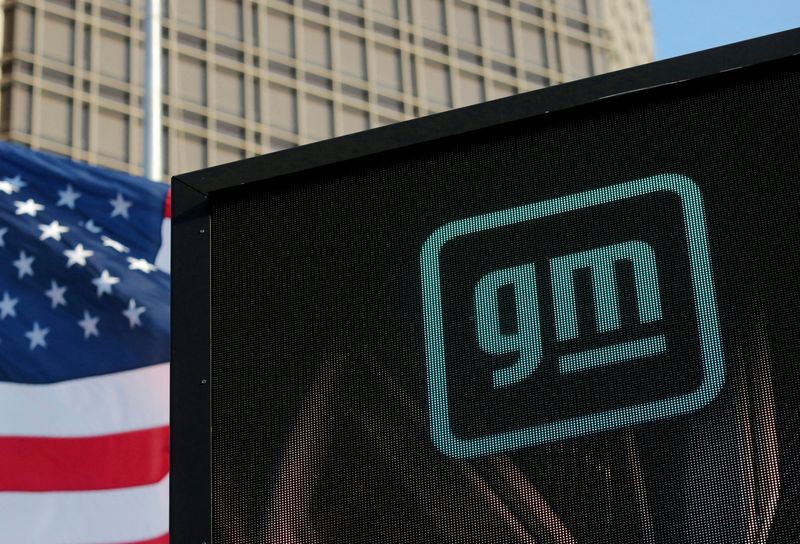By Paul Lienert
(Reuters) - General Motors (NYSE:GM) has said it will have the capacity to build 1 million electric vehicles in North America by 2025, but a slow ramp-up of its three U.S. battery plants could limit actual EV production to less than 600,000 at mid-decade, according to a forecast and analysis prepared for Reuters.
Building more than half a million EVs in North America in 2025 “will be difficult, based on (GM’s) planned battery production” at plants in Ohio, Tennessee and Michigan, according to Sam Fiorani, head of global vehicle forecasting at Pennsylvania-based AutoForecast Solutions (AFS), a widely consulted industry research and analytics firm.
"We have not changed our targets," GM spokesman Jim Cain said. Those targets include cumulative EV production of 400,000 from early 2022 through mid-2024, a revised goal that CEO Mary Barra reiterated earlier this year.
"We believe GM’s targets are hittable despite hurdles to get there," Wedbush auto analyst Dan Ives said.
GM has not issued specific North American EV production targets for 2024 and 2025.
GM’s Ultium Cells joint venture with Korea’s LG Energy Solution has opened its first plant in Warren, Ohio, with a second plant in Spring Hill, Tennessee, slated to begin production in early 2024 and a third in Lansing, Michigan, to open in early 2025.
Virtually all of GM's newest EVs in North America are designed to use Ultium battery packs developed jointly with LGES and produced at one of the three U.S. plants.
Those three facilities will have a combined annual capacity of at least 135 gigawatt-hours (GWh), according to GM — enough to supply at least 1.35 million EVs a year.
But with the staggered startup schedules and slow ramp, AFS forecasts the three battery plants will be able to produce just 58 GWh worth of cells, or enough to supply about 550,000 vehicles.
“Limitations on that battery capacity make higher vehicle production targets difficult to reach,” Fiorani said, adding that GM’s projected EV volumes could also be constricted by the company’s ability to secure sufficient raw materials for batteries.
In July 2022, GM said it had lined up enough battery raw materials, including lithium, nickel, cobalt and cathode active material, to reach its goal of producing 1 million EVs annually in North America by 2025.
GM’s global battery materials supply chain is extensive, encompassing investments, partnerships and offtake agreements with more than 20 companies, including such heavy hitters as Glencore (OTC:GLNCY), Livent (NYSE:LTHM), Posco Chemical, LG Chem and Lithium Americas (NYSE:LAC).
Some of those deals won’t result in a flow of materials until after 2025, but even then supplies could run into snags as global automakers accelerate their investments in and production plans for future EVs in major markets.
GM’s North American EV production targets beyond 2025 “will continue to push the limits” of its battery plants, according to AFS, including a recently announced fourth factory with new partner Samsung (KS:005930) SDI that isn’t expected to open until 2026.
Despite GM’s ambitious projections for EV production in the latter half of the decade, “accessing the components and materials necessary for that growth will become increasingly difficult,” according to the forecast house.
AFS now expects GM to build around 76,000 EVs this year in North America and 328,000 in 2024.

GM's Chevrolet brand plans to launch several new electric vehicles this year, including Equinox and Blazer EVs and a Silverado EV pickup. Its Bolt EV and Bolt EUV will end production later this year.
GM still has not fully ramped up production of the Cadillac Lyriq and GMC Hummer EV. It delivered just 968 Lyriqs and only two Hummer pickups in the first quarter.